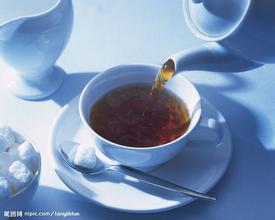Classification standard and food safety standard of coffee beans what documents do you need to apply for to open a coffee shop?
Classification standard and food safety standard of coffee beans what documents do you need to apply for to open a coffee shop?
This is the earliest method of grading and is still in use in many parts of Brazil. The method of identification is to randomly take 300 grams of samples and put them on black paper, because black paper can best avoid reflection. Then the professional appraiser carefully inspects the defective beans in the sample and accumulates different scores according to the types of defects. for example, black beans are counted as 1 point, pebbles as 1 point, big pebbles as 5 points, broken beans as 1 point, pest beans as 5 grains, sour beans as 1 point, large dried peels as 1 point, medium dried peels as 1 point, and 3 peels as 1 point. 5 unshelled beans count as 1 point, and 3 shell beans count as 1 point. After the identification is completed, the grade is NY2~NY8 according to the accumulated defect score, and there is no NY1. It's funny if you want to buy first-class (NY1) Brazilian beans. By the same token, only the highest grade is eligible for selection of coffee.
This grading method is also used in Indonesian coffee, and the method of identification is roughly the same as the calculation of defect scores. However, the final grading is different. Indonesian beans are mainly divided into six grades, namely Gr1~Gr6. Ethiopia also uses this method, the highest grades of washed beans are Gr1 and Gr2, and the highest grades of sun-dried beans are Gr3.
This classification method is based on a variety of available screen classification, the screen has a variety of specifications, with a number to identify, the number is associated with the mesh. The size of the mesh is calculated in 1 stroke 64 inches. If the diameter of the mesh is 18 stroke 64 inches, the number of the mesh is 18; if the diameter of the mesh is 17 stroke 64 inches, the number of the mesh is 17; and so on, there are various numbered screens, such as 14, 15, 16, 19 and so on.
The process of screening is to put the coffee beans on the sieve, and after shaking them back and forth by hand or machine, the beans smaller than the sieve will fall and be removed; the beans that have been removed will be screened again through a smaller sieve and screened layer by layer, and the coffee beans will be sorted out.
After grading, the production area is divided into AA,A,B,C and PB series. AA is the highest level, while A-grade B-score C decreases successively, and those below C level are usually used as feed chat or fertilizer. In addition, round beans (Pea-Berry) have a special flavor, and the beans themselves are relatively small, so they have their own grade, that is, [PB], which is usually more expensive. In addition, we can also see the grades Y2 and T of XMagol Y1Magol. These coffee beans are of different sizes and have a lot of defective beans, so they are quite bad products and are not worth a try.
This classification is generally used in Kenya, New Guinea, Puerto Rico, Zimbabwe, Tanzania and Uganda. In addition, many Brazilian coffees are graded in this way, but they directly use 191,18,17,18,18,17. Instead of using AA,A,B,C, etc.

Important Notice :
前街咖啡 FrontStreet Coffee has moved to new addredd:
FrontStreet Coffee Address: 315,Donghua East Road,GuangZhou
Tel:020 38364473
- Prev

Introduction of Yunnan Coffee Bean varieties with large grains and small grains
Cymes are clustered in leaf axils, each inflorescence has 2-5 flowers, without total pedicel or with very short total pedicel; flowers fragrant, with pedicels 0.5-1 mm long; bracts basally somewhat connate, dimorphic, of which 2 are broadly triangular, nearly equal in length and width, the other 2 lanceolate, twice as long as wide, leaf-shaped; calyx tube-shaped.
- Next

Introduction to the use and maintenance of flat knife ghost teeth in coffee bean grinder
Coffee bean grinder flat knife ghost tooth use and maintenance failure methods introduce bean grinder generally classified by coffee extraction, divided into single coffee grinder and Italian coffee grinder two categories! According to the grinding plate structure can be divided into ghost teeth, flat knife, cone knife, three categories! You can break up manpower and electric power according to the way you work. But no matter what category, my personal advice is to buy what you can afford.
Related
- Guji coffee producing area of Guji, Ethiopia: Humbela, Shakiso, Wulaga
- What is the most expensive variety of Qiloso in BOP multi-variety group?
- How to store the coffee beans bought home?
- Why are Yemeni coffee beans so rare now?
- Ethiopian Sidamo all Red Fruit Sun Sun Santa Vini Coffee beans
- SOE is mostly sour? What does it mean? Is it a single bean? what's the difference between it and Italian blending?
- Is Italian coffee beans suitable for making hand-brewed coffee?
- How to choose coffee beans when making cold coffee? What kind of coffee beans are suitable for making cold coffee?
- Just entered the pit to make coffee, what kind of coffee beans should be chosen?
- Can only Japan buy real Blue Mountain Coffee? What are authentic Jamaican Blue Mountain coffee beans?

